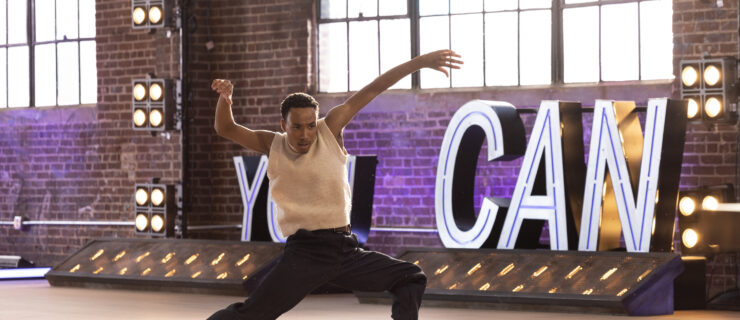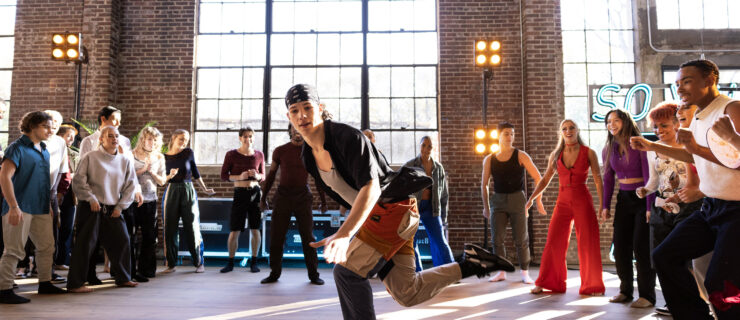Chaînés for Days
Watching Misa Kuranaga, a principal dancer at Boston Ballet, whip through a diagonal of chaîné turns with unbelievable speed is exhilarating. But while Kuranaga makes chaînés look easy, even she feels like she hasn’t conquered them yet. “I have to watch myself on video to see if they’re getting better or not,” she says.
Chaîné turns are often one of the first across-the-floor steps ballet dancers learn, but they’re seriously difficult to master. Whether you’re a seasoned pro or just figuring out the basics, you’ll want to hear what the experts have to say about chaînés. Their advice could help your turns go from fine to fantastic.

Ballet Academy East’s Lauren Wolfram demonstrates clean chaînés—picture-perfect at every turn. (Photo by Erin Baiano)
The Basics
Chaînés (short for “tours chaînés déboulés”) are quick traveling turns. Most dancers do chaînés with their feet in first position. Some schools teach chaînés in fifth position, with the hips facing the direction you’re traveling and the front foot stepping out to effacé each time. According to Graca Sales, a ballet master and principal coach at Joffrey Ballet, hyperextended dancers who have trouble fully straightening their legs in fifth position might have an easier time with chaînés in first position.
Many dancers begin by doing chaînés with their hands on their hips or their fingertips on their shoulders. “Going slow at the beginning gives you more control over your position,” Sales says. Removing your arms from the equation also lets you focus on spotting—and a strong spot will help you turn quickly and musically later on.
Common Problems
If your chaînés are slow, you might not be bringing the second side of your back around fast enough. Joanna Berman, teacher at Marin Dance Theatre in San Rafael, CA, and other schools in the Bay Area, suggests stepping with your second foot on the first count of the phrase. “Pull around so you’re already facing the back corner by that point,” she says. “It gets the body spiraling quickly, and makes the sequence feel like a series of turns rather than a series of steps.”
Some dancers let their feet separate too much as their chaînés progress and end up losing control. Focus on maintaining tension between your inner thighs. “The two legs should feel like they’re connected as much as possible,” says Berman. You also want tension in your torso, which will pull you up and keep you from traveling too far with each step. “You should feel like energy is coming out the top of your head,” Berman says. Imagine your body making a spiral shape, moving upward as well as outward.
Make Them Dynamic
The way you hold your arms can affect the feel of your chaînés. Kuranaga sometimes closes her arms in slowly as she progresses, like a figure skater, to gradually increase her speed. “If I do a true first position, I feel like the big circle is throwing me off,” she says.
If the choreography permits, you can choose between doing a tombé, chassé or piqué into a series of chaînés. A tombé or chassé will help you gain speed right away, while a piqué “makes a cleaner start,” Sales says. But it’s the way you finish the turns that leaves the biggest impression on the audience. Sales suggests taking a deep plié after your final chaîné to help put on the brakes. “It’s that contact with the floor that orients you again,” she says. “Then you’re ready for whatever’s next, be it a pirouette or a balance in arabesque.”




